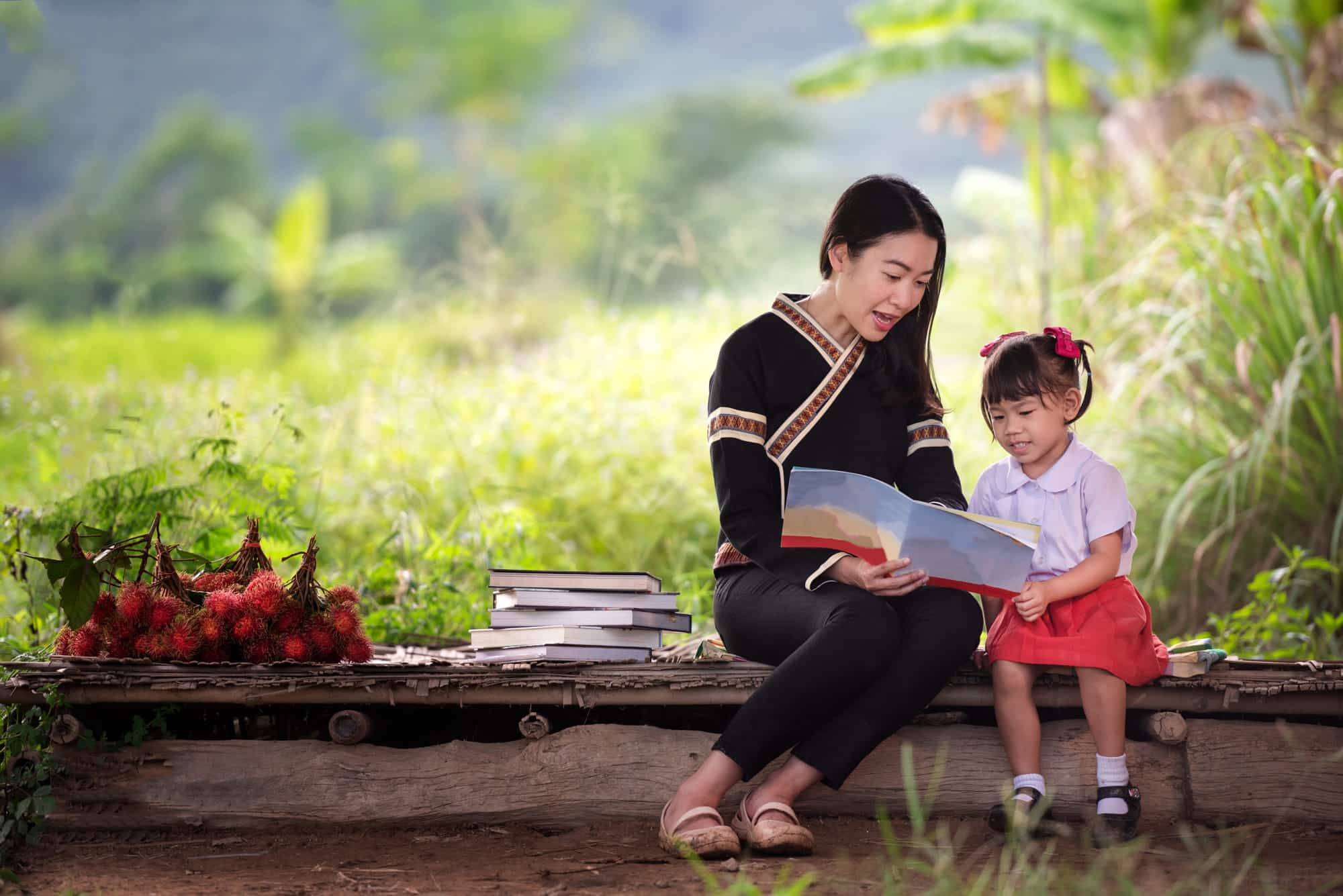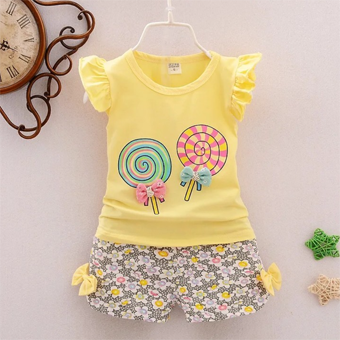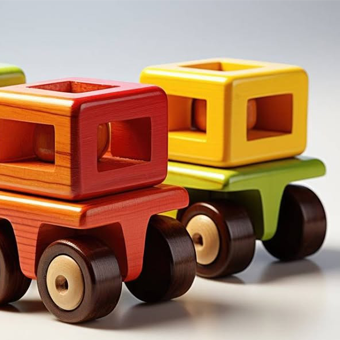“Why do they feel sad?” Shared book reading reveals how children learn about others’ emotions

Key takeaways for caregivers:
- It is good for children to identify the emotions of others in conversations with caregivers because it scaffolds their ability to identify others’ emotions on their own.
- Children who use more emotion talk in parent-child conversations about emotions are more likely to have higher emotion knowledge one year later.
- Parents can help younger preschoolers use more emotion talk by modelling it themselves. For example, a parent might say, “She is sad because she dropped her ice cream.”
- Parents can help younger and older preschoolers use more emotion talk by asking questions during shared book reading. For example, a parent could ask, “Why is that child crying?”
How can parents support children’s early emotional development?
Understanding emotions is a fundamental component of healthy social adjustment. Children express a wide variety of emotions in their first years of life. But how do they learn to identify others’ emotions, including the causes of emotions?
Do they do so by observing a parent label someone’s smile, frown, or grimace? Or do children thrive more when asked questions that help them talk more about emotions? These questions highlight ongoing public interest in giving parents tools to help improve their children’s emotional development.
Understanding emotions is a fundamental component of healthy social adjustment.
We conducted a multi-visit, multi-year study to address this very question: How do parents’ emotion talk and question-asking behaviors relate to children’s emotional development?
We focused on these effects during the transition from preschool to kindergarten because emotion understanding in kindergarten is related to healthy social adjustment throughout the school years. We explored emotional development through both children’s own emotion talk during shared book reading and measures of their emotion knowledge. Knowing about these connections can help caregivers strategize during discussions with their children.
Studying children’s emotional development in the home
Our study suggests that parents and children play different roles in children’s acquisition of emotion understanding. We visited the homes of 256 children and parents who were part of a nationally representative sample from the United States yearly for three years, starting when the children were two and a half years old.
First & second year visit observations
In the first- and second-year visits, we observed parents and children discussing a picture book that depicted several animated characters expressing an emotion in response to a situation, such as being sad after dropping an ice cream cone in the dirt. We wanted to explore both parents’ and children’s emotion talk, including emotion labels, emotion causes, and references to the character experiencing the emotion.
We transcribed parent-child conversations and used a computer algorithm to separately document parents’ and children’s emotion talk. We also coded the number of causal questions (e.g., why does she feel sad?) and knowledge-based questions (e.g., did she drop her ice cream cone?) parents asked during the discussion.
Second & third year visit observations
In the second- and third-year visits, we evaluated children’s emotion knowledge, or the ability to correctly identify emotions and their causes, using a series of puppet shows. Prior research has shown that children’s emotion knowledge in the preschool years is positively related to healthy outcomes in the later school years, such as early school adjustment and academic success.
Unique influence of parents’ and children’s behaviors
In short, we wanted to see what parent and child behaviors during shared book reading might be related to children’s higher scores on an emotion knowledge task. Again, we focused on parents’ and children’s emotion talk and parents’ question asking.
We also collected information on several child and family characteristics related to children’s emotional development, including families’ annual income, parents’ highest level of education, children’s gender, and a measure of children’s general language development. It was vital to the integrity of our study to account for these variables in our analyses so we could identify the unique influences of parents’ and children’s behaviors in children’s developing emotion understanding.

Photo from Flickr. Creative Commons.
Finding # 1: Parents’ question asking was consistently related to preschoolers’ emotion talk in early childhood
At all our visits, parents who asked more questions relative to other parents had children who used more emotion talk. At the first visit (when children were two and a half years old), we also found that parents who used more emotion talk relative to other parents had children who also used more emotion talk; however, at ages three and a half and four and a half, children’s emotion talk was no longer related to their parents’.
What does this mean? Children at a younger age may benefit from seeing their parent label and identify the causes of emotions; however, a year later, children whose parents used more emotion talk than other parents did not use any more emotion talk than their same-age peers. At these older ages, only parents’ frequency of questions related to children’s emotion talk.
These findings also underscore the possibility that the ideal outcome of a parent-child conversation about emotions is a child’s own production of emotion talk because this is a significant driver of later developing emotion knowledge.
These findings suggest that parents’ questions may be an effective way to elicit emotion talk across early childhood. In contrast, parents of older toddlers (three-and-a-half-year-olds) may want to reduce their focus on using emotion labelling themselves since that might no longer be as effective.
Finding # 2: Children’s participation in shared book reading drove their emotional development across early childhood
We also found that children’s own emotion talk in shared book reading at age three and a half was positively related to their emotion knowledge in the same year and a year later. Children’s emotion knowledge was not correlated with parents’ emotion talk and questions. These findings suggest that children’s participation in parent-child discussions of emotions is crucial to their emotional development.
Conclusion: Parents’ engagement in emotion talk and asking questions may support their children’s emotional development
Our findings highlight the different roles parents and children play in children’s emotional development and identify possible parenting strategies. Parents who engaged younger and older preschoolers in emotion conversations by asking questions seemed to have children who engaged in more emotion talk, whereas parents’ own emotion talk in such conversations was positively related only to younger (not older) preschoolers’ emotion talk.
Conclusion #1: Children’s own production of emotion talk in parent-child conversations is crucial
Regarding children’s emotion knowledge, the story is more nuanced. Children’s emotion knowledge in kindergarten was predicted only by children’s emotion talk in preschool rather than by parents’ emotion talk or questions. These results suggest that children’s own production of emotion talk in parent-child conversations is crucial to their ability to identify emotions on their own, without parental assistance.
Conclusion #2: One ideal outcome of a parent-child conversation may be a child’s own production of emotion talk
These findings also underscore the possibility that the ideal outcome of a parent-child conversation about emotions is a child’s own production of emotion talk because this is a significant driver of later developing emotion knowledge. Such production is most likely fostered by parents’ questions (e.g., “why does she feel sad?”) for preschoolers of all ages, whereas younger children might need additional scaffolding from parents in the form of parents’ emotion talk (e.g., “she feels sad because she dropped her ice cream in the dirt”).
















Leave a comment